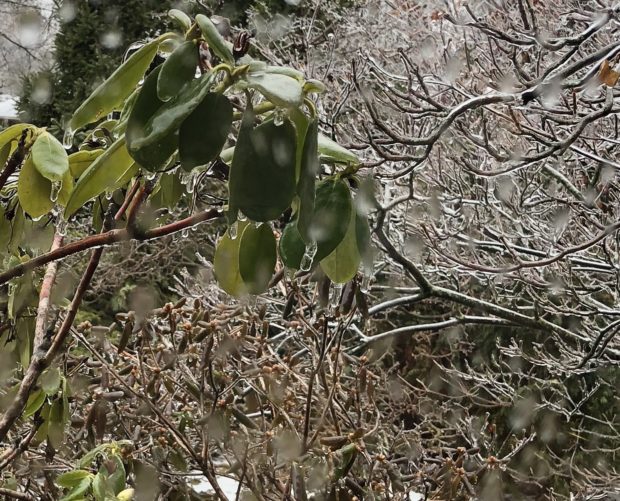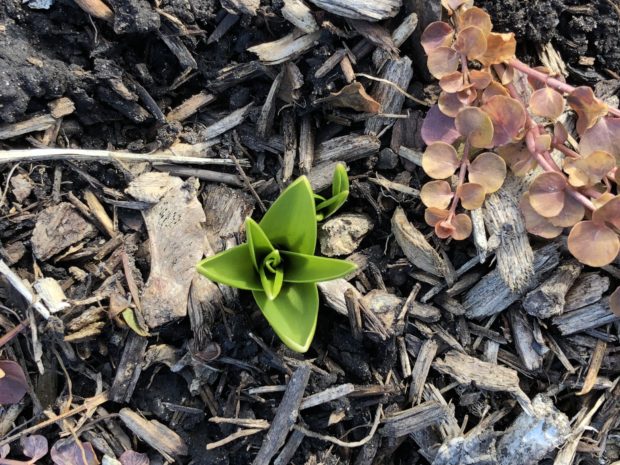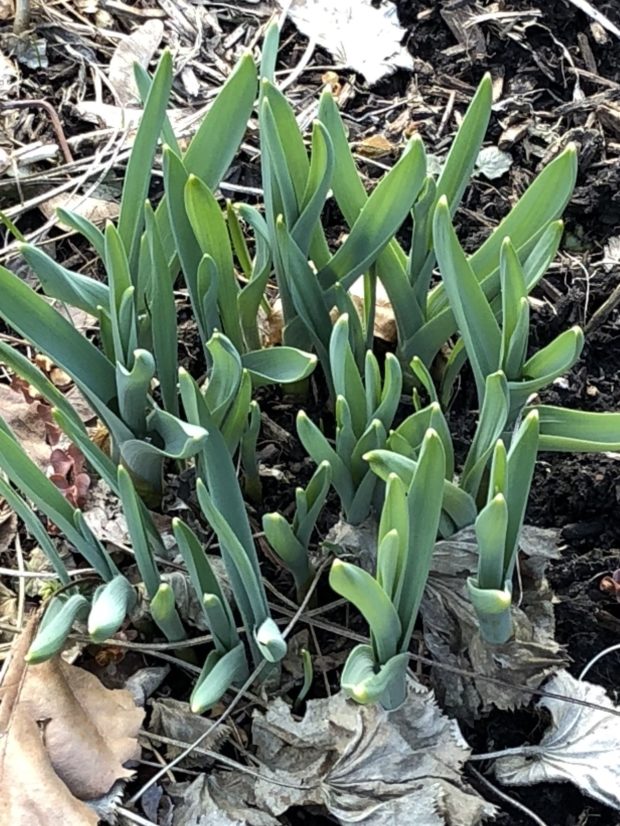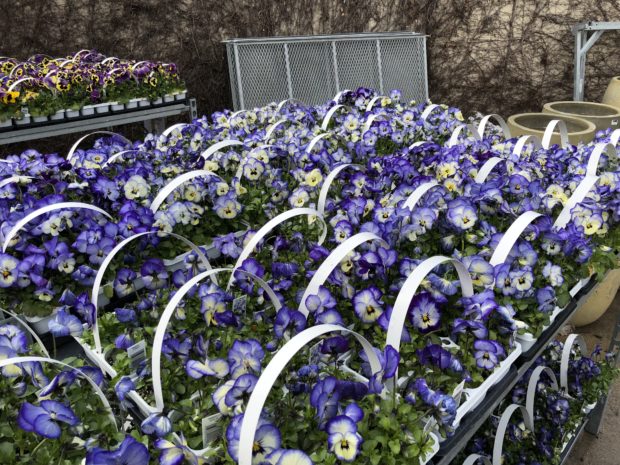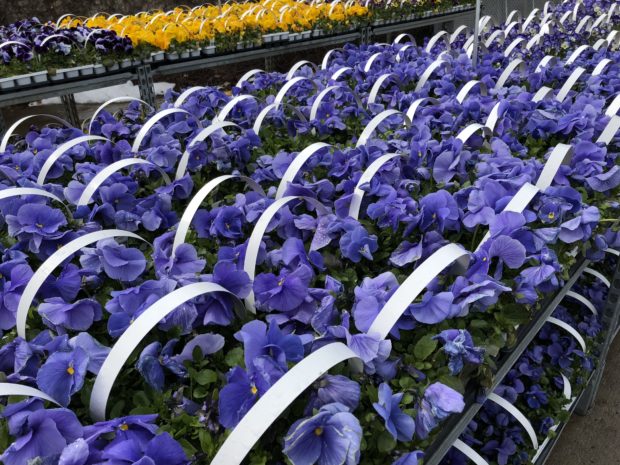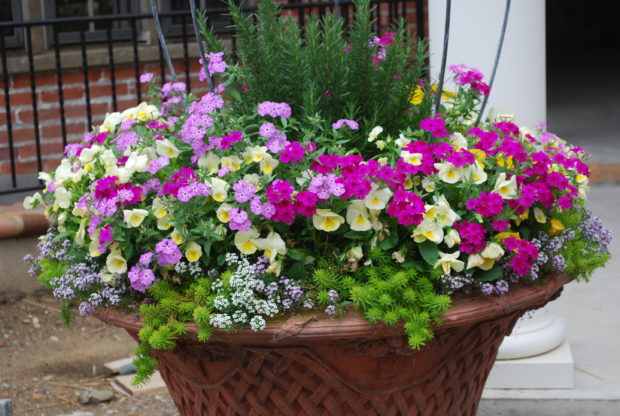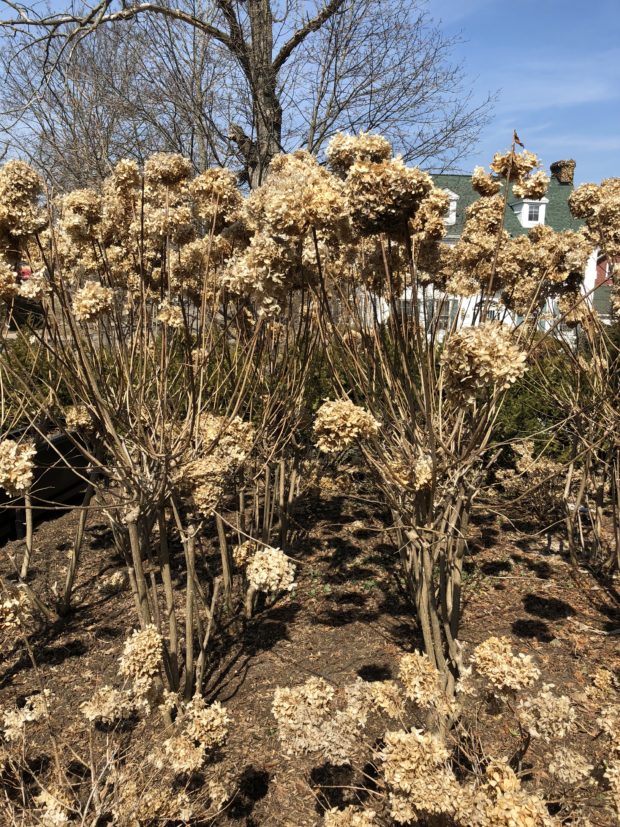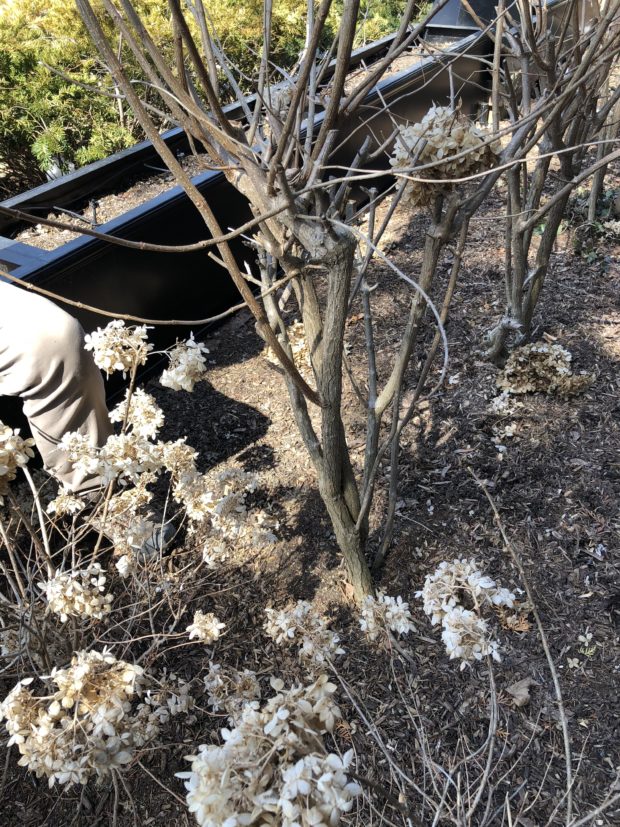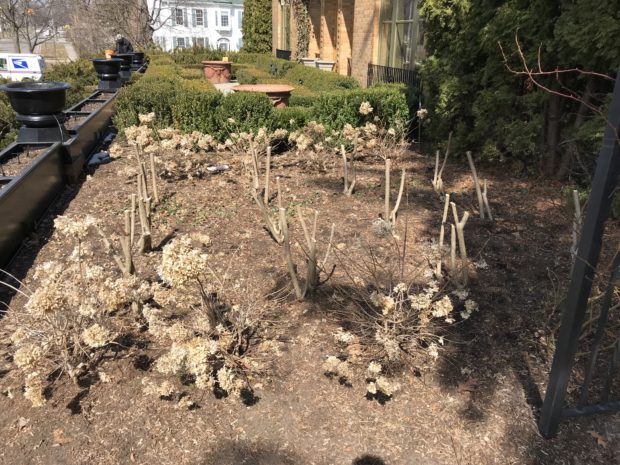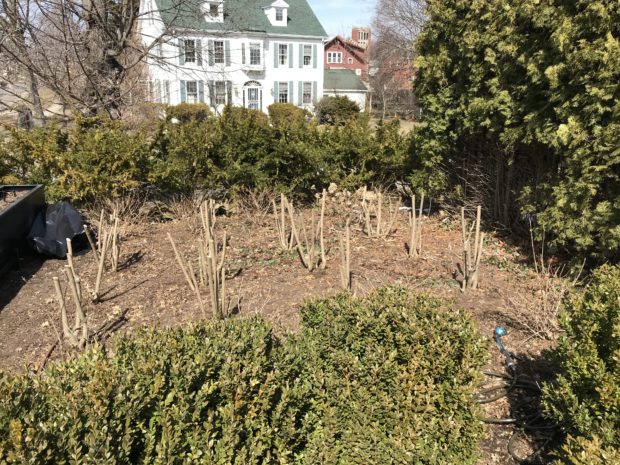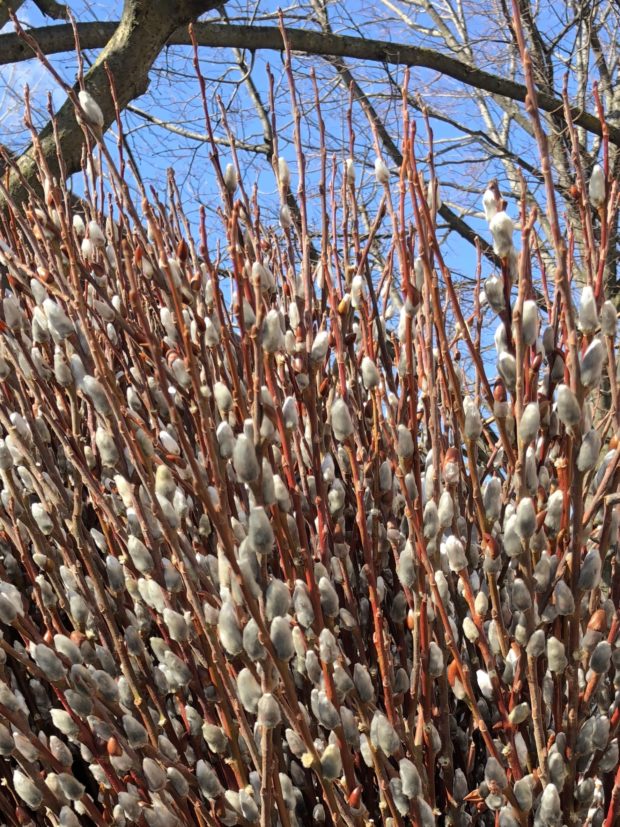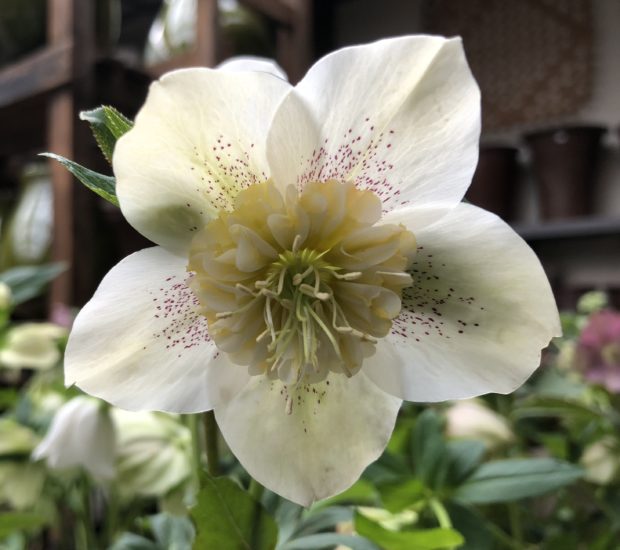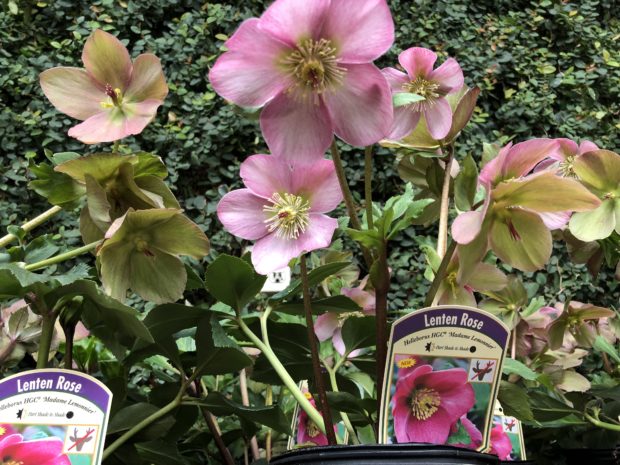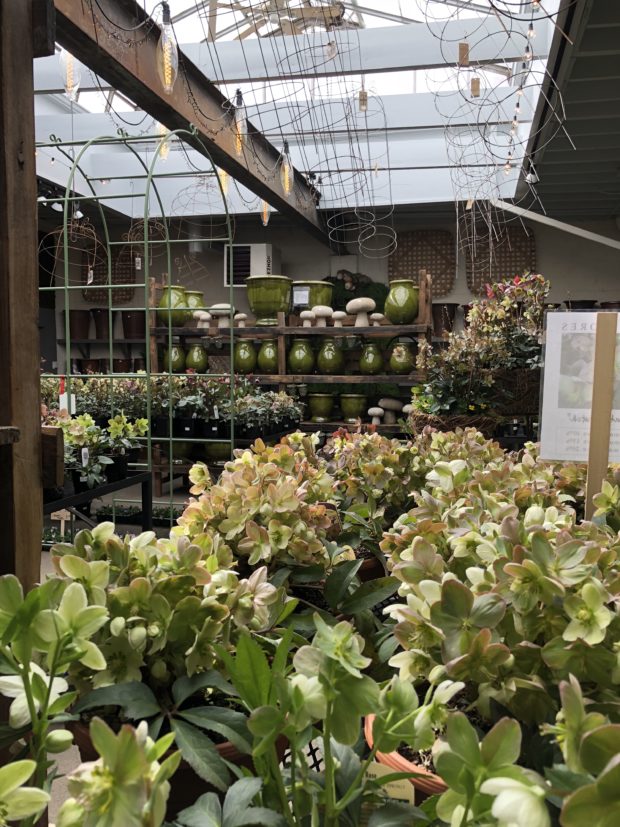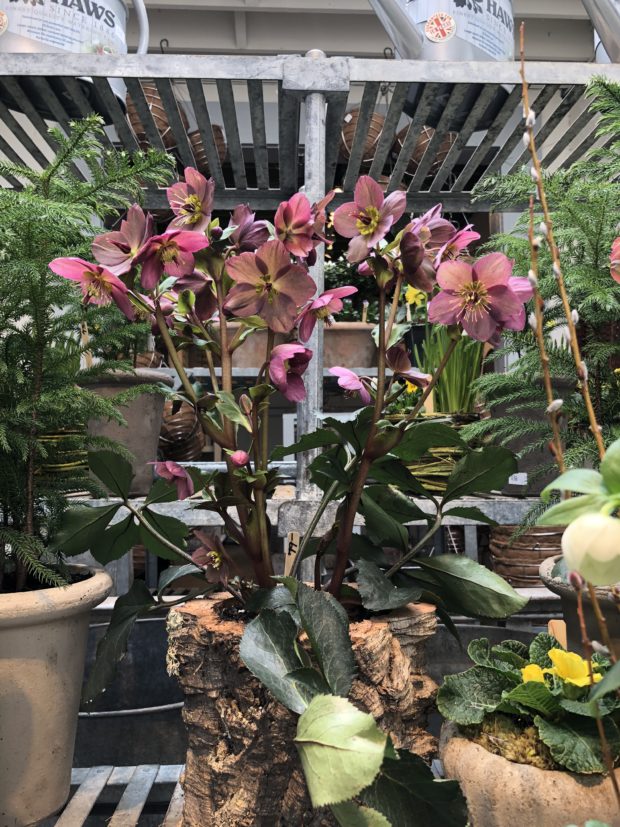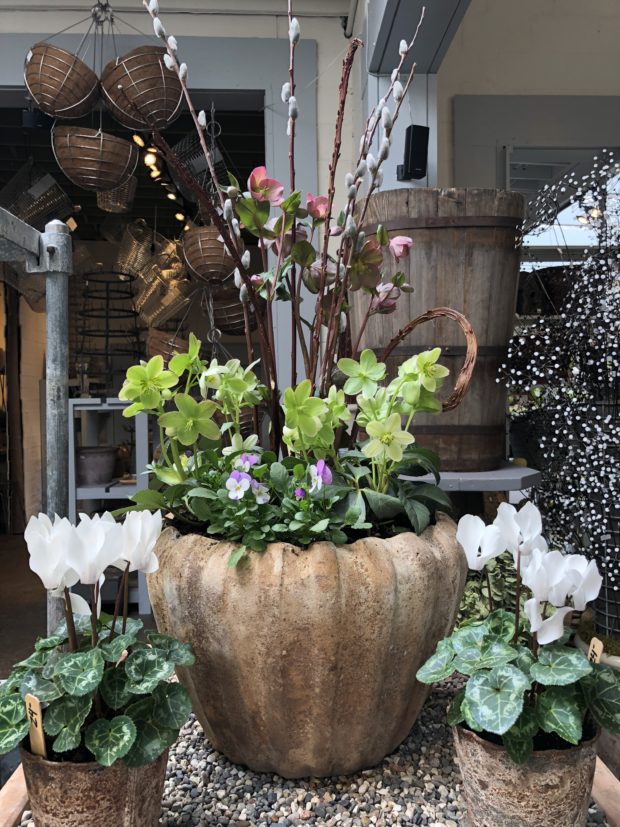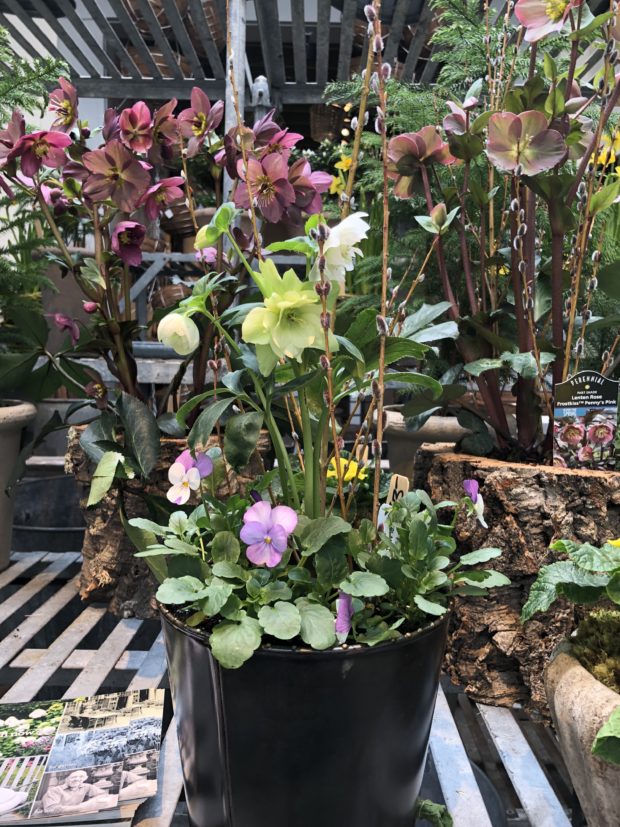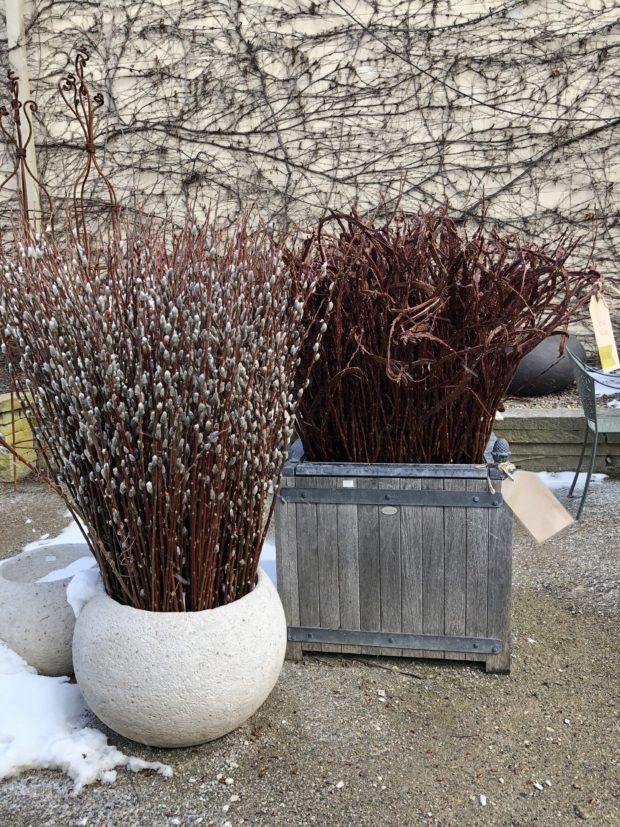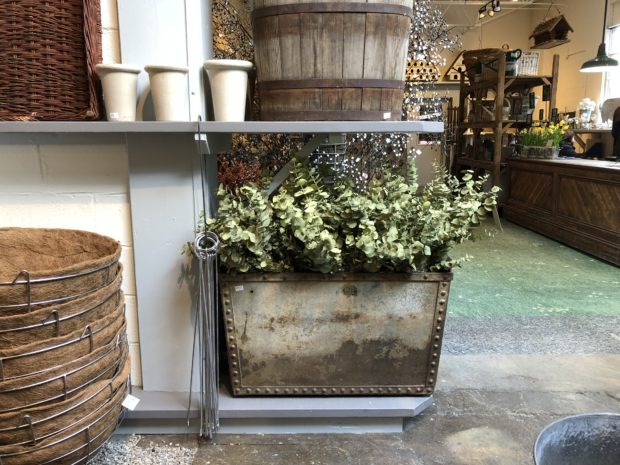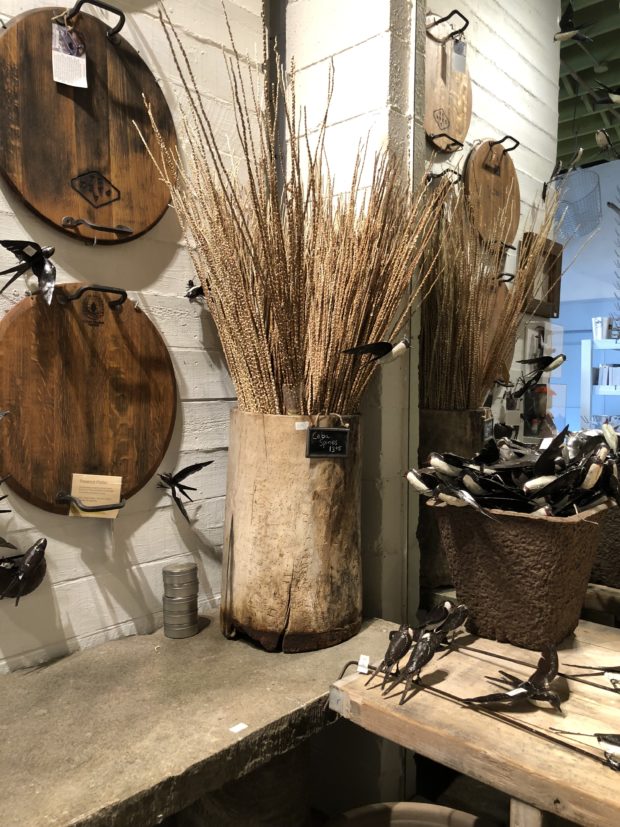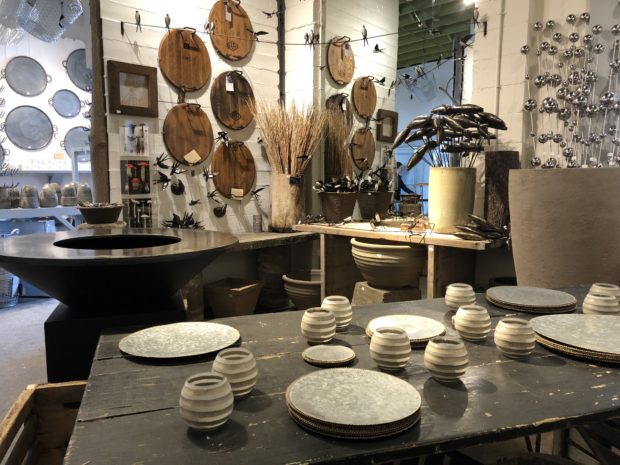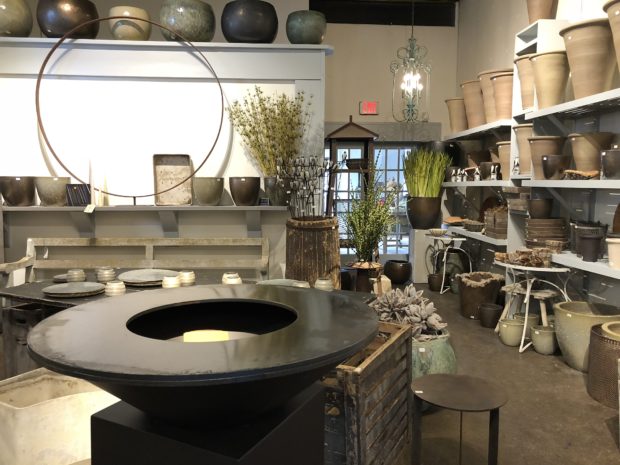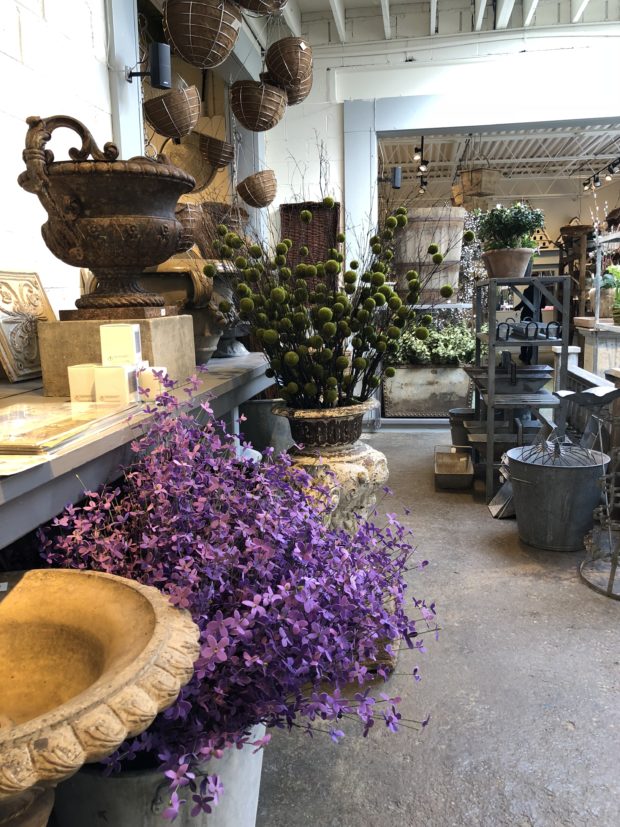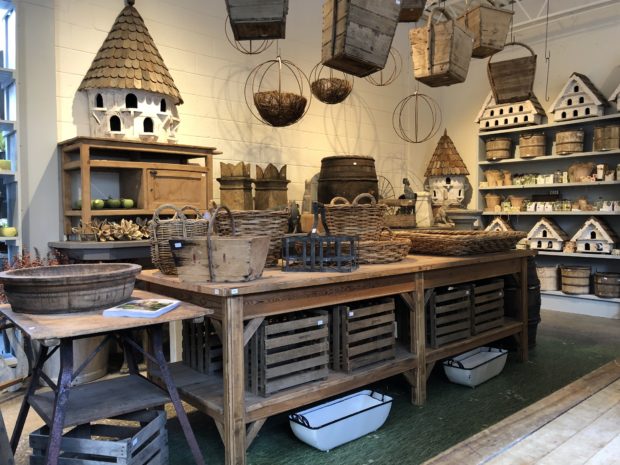 Our local newspaper recently confirmed what all of the gardeners in my area already knew. One would have to go back 134 years to find an April as cold as the one we have just lived through. Who knows what gardeners did in 1887 given their blisteringly cold April. I am cautiously optimistic that better weather is on the way, even though it is barely 50 degrees today. I have had clients tell me that we won’t have any spring. That summer is just about here. Don’t believe it. We always have a spring. The March and April of it has just been exceptionally cold. May is a spring month as well, despite those who insist on planting summer annuals and vegetables before the soil is warm enough for them. Anyone who treats May as a summer month is bound for some disappointment. We have been planting spring containers for a few weeks now. We have relied quite a bit on pansies and violas, as we have a grower who starts them the previous summer, and winters them in a cold greenhouse.We have planted some annual phlox, and I took a chance on some dwarf white fuchsia, rosemary, lavender and lettuce. These plants have been hothouse grown, so placing them outdoors abruptly can result in leaf damage. What it has been too chilly for is a long list.
Our local newspaper recently confirmed what all of the gardeners in my area already knew. One would have to go back 134 years to find an April as cold as the one we have just lived through. Who knows what gardeners did in 1887 given their blisteringly cold April. I am cautiously optimistic that better weather is on the way, even though it is barely 50 degrees today. I have had clients tell me that we won’t have any spring. That summer is just about here. Don’t believe it. We always have a spring. The March and April of it has just been exceptionally cold. May is a spring month as well, despite those who insist on planting summer annuals and vegetables before the soil is warm enough for them. Anyone who treats May as a summer month is bound for some disappointment. We have been planting spring containers for a few weeks now. We have relied quite a bit on pansies and violas, as we have a grower who starts them the previous summer, and winters them in a cold greenhouse.We have planted some annual phlox, and I took a chance on some dwarf white fuchsia, rosemary, lavender and lettuce. These plants have been hothouse grown, so placing them outdoors abruptly can result in leaf damage. What it has been too chilly for is a long list.
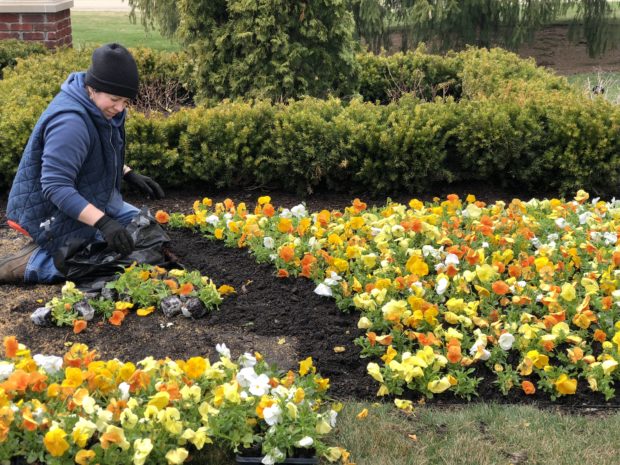 The buds on the trees are swelling, but we are still leafless. The landscape looks groggy. Off color. My magnolia stellata has flower buds barely breaking and showing white. I am sure many of those buds will never open.The hellebores are thinking about it. Not a peep out of much else, but for the early flowering spring bulbs. The only perennial plant in my garden who has dared to venture forth is Alchemilla-lady’s mantle. Those new leaves are hugging the ground. As they should! But this daffodil mix pansy is as bright and cheery as can be. Though they are diminutive in size, pansies can provide a vivid preview of the color to come. Plant a few, or plant a truckload, the effect is the same. A little or a lot of color can energize gardener. Daffodils are just beginning to bloom, and the tulips will be a good while yet. This means the timing for an appearance from pansies and violas is just right.
The buds on the trees are swelling, but we are still leafless. The landscape looks groggy. Off color. My magnolia stellata has flower buds barely breaking and showing white. I am sure many of those buds will never open.The hellebores are thinking about it. Not a peep out of much else, but for the early flowering spring bulbs. The only perennial plant in my garden who has dared to venture forth is Alchemilla-lady’s mantle. Those new leaves are hugging the ground. As they should! But this daffodil mix pansy is as bright and cheery as can be. Though they are diminutive in size, pansies can provide a vivid preview of the color to come. Plant a few, or plant a truckload, the effect is the same. A little or a lot of color can energize gardener. Daffodils are just beginning to bloom, and the tulips will be a good while yet. This means the timing for an appearance from pansies and violas is just right.
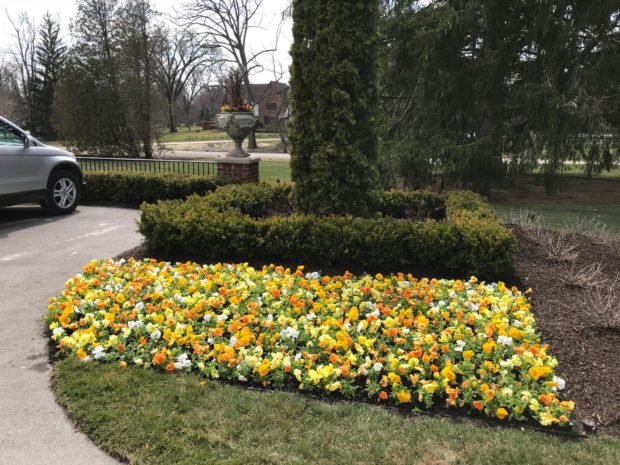 It is a lot to ask of a plant, to be ready to grow and bloom ahead of time. Our pansies have been fine with temperatures as low as 22 degrees. For this project we loaded up and left them in the truck, which was parked in our landscape building, for 3 days. That protected them from our recent our ice and sleet storm. But I can report that those plants that endured that nasty weather outdoors look just fine today. How I welcome their forbearance. I am always amused to hear a plant described as shade loving. They are in fact shade tolerant. Lots of seasonal plants can tolerate chilly temperatures, but few persevere in really cold weather like the pansies.
It is a lot to ask of a plant, to be ready to grow and bloom ahead of time. Our pansies have been fine with temperatures as low as 22 degrees. For this project we loaded up and left them in the truck, which was parked in our landscape building, for 3 days. That protected them from our recent our ice and sleet storm. But I can report that those plants that endured that nasty weather outdoors look just fine today. How I welcome their forbearance. I am always amused to hear a plant described as shade loving. They are in fact shade tolerant. Lots of seasonal plants can tolerate chilly temperatures, but few persevere in really cold weather like the pansies.
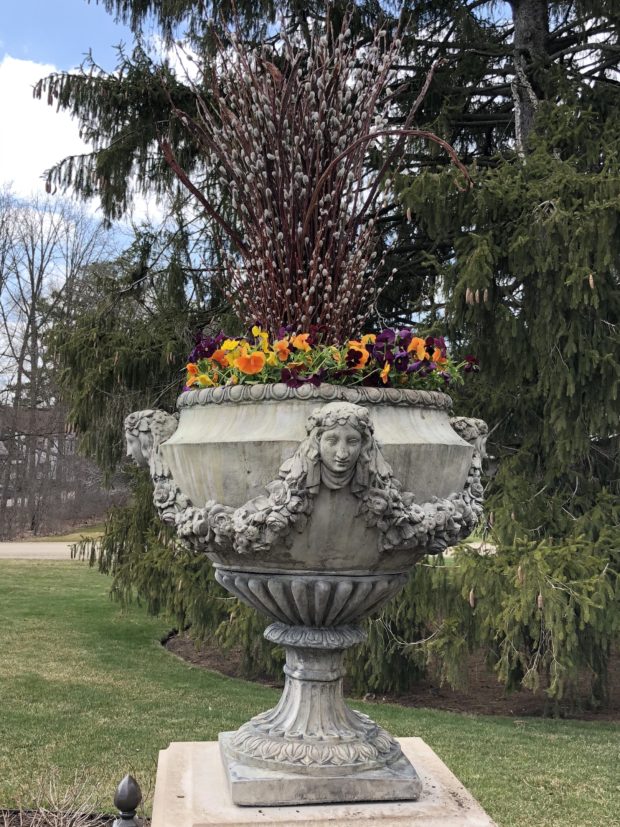 Fresh cut pussy willow is a mainstay of our spring pots. The catkins are a glossy and furry gray. Once they are cut, they will hold that moment as they dry. Pussy willow stems indoors, in water, will produce pollen, and many stems eventually leaf out. Their behavior in this regard is a great example of how routine and powerful the will to live can be. I especially enjoy how effortlessly they adapt to a second life in a container.
Fresh cut pussy willow is a mainstay of our spring pots. The catkins are a glossy and furry gray. Once they are cut, they will hold that moment as they dry. Pussy willow stems indoors, in water, will produce pollen, and many stems eventually leaf out. Their behavior in this regard is a great example of how routine and powerful the will to live can be. I especially enjoy how effortlessly they adapt to a second life in a container.
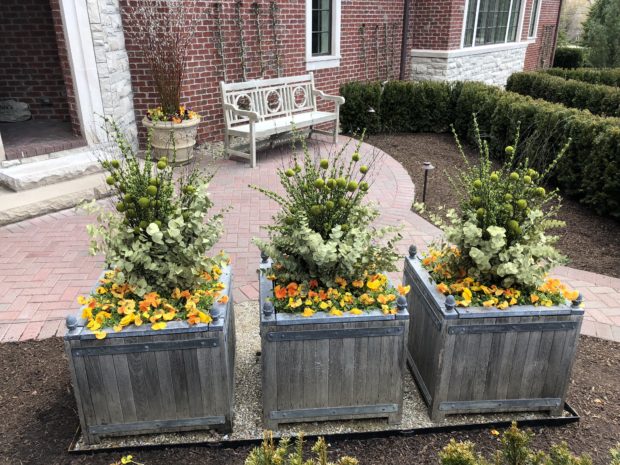 The pansies are small and short in April. A another month, they will be overflowing these boxes. But for now, a tall centerpiece of preserved eucalyptus and faux stems provide them a forum from which to speak up. There are those transitional times in the year when a gardener has the option to represent the sentiment of the season generously. In a very short time, there will be breaking news from all of the plants in the landscape. Right now, spring containers have no competition.
The pansies are small and short in April. A another month, they will be overflowing these boxes. But for now, a tall centerpiece of preserved eucalyptus and faux stems provide them a forum from which to speak up. There are those transitional times in the year when a gardener has the option to represent the sentiment of the season generously. In a very short time, there will be breaking news from all of the plants in the landscape. Right now, spring containers have no competition.
 Color plays a big part in any seasonal planting. Colors placed side by side that are closely related make for a subtle expression. Colors that strongly contrast in both hue and value make for more drama.
Color plays a big part in any seasonal planting. Colors placed side by side that are closely related make for a subtle expression. Colors that strongly contrast in both hue and value make for more drama.
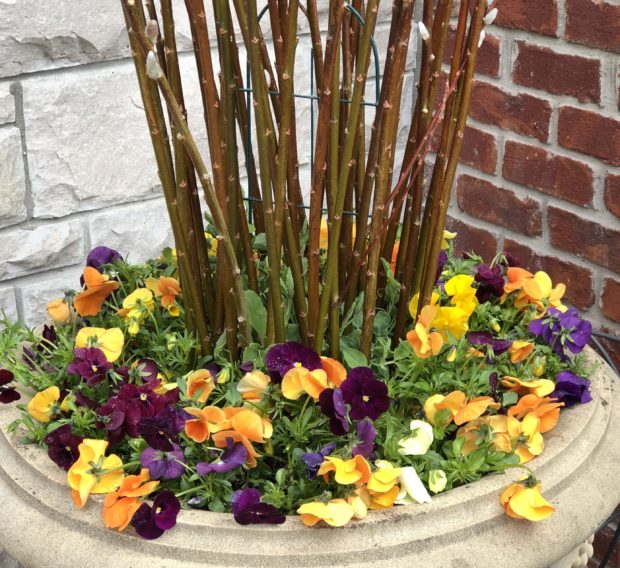 I do like color mixes that are not entirely predictable. No gardener needs a computer generated plan of action. I like that odd color out. I like color mixes that are imperfect. I like efforts in the garden that are unpredictable. The best voice is one’s own garden is one’s own voice. Trust that. Whatever I do in my garden, landscape, or containers, I always like when I can see that my choices are based on a relationship between my hands and the materials.
I do like color mixes that are not entirely predictable. No gardener needs a computer generated plan of action. I like that odd color out. I like color mixes that are imperfect. I like efforts in the garden that are unpredictable. The best voice is one’s own garden is one’s own voice. Trust that. Whatever I do in my garden, landscape, or containers, I always like when I can see that my choices are based on a relationship between my hands and the materials.
 I am a professional designer. I do take pains to discuss with my clients about what they would like to see. There is a relationship that needs to be honored. I do not expect them to direct me. I encourage them to express to me what is important to them in style, shape and color and affect. I try to interpret that.
I am a professional designer. I do take pains to discuss with my clients about what they would like to see. There is a relationship that needs to be honored. I do not expect them to direct me. I encourage them to express to me what is important to them in style, shape and color and affect. I try to interpret that.
 This client chose a sunny and contrasting color palette for her spring planting. I admire that gesture. She is as tired of our long winter as I am.
This client chose a sunny and contrasting color palette for her spring planting. I admire that gesture. She is as tired of our long winter as I am.
 Sooner or later she will see the lettuce at the center of these boxes. The spring garden is full of surprises, is it not?
Sooner or later she will see the lettuce at the center of these boxes. The spring garden is full of surprises, is it not?
